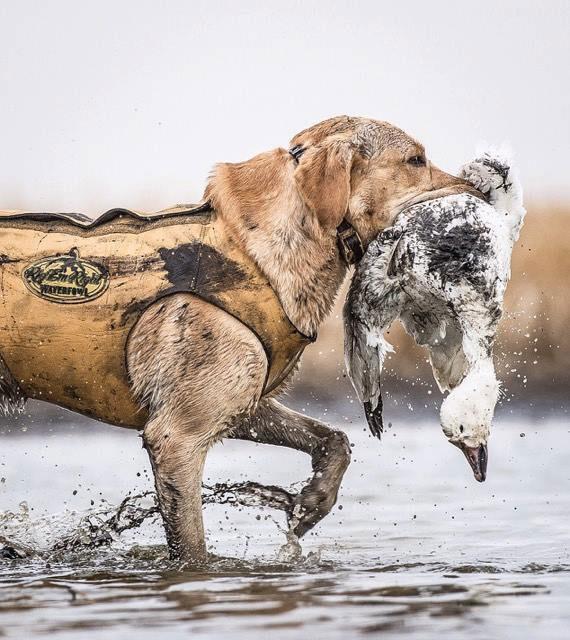
6 Tips for a Better Snow Goose Hunt with Your Retriever
Posted by The SportDOG StaffSnow goose hunting brings its own, unique set of thrills in the world of waterfowling. Spring seasons, liberal or no bag limits, the use of electronic callers and unplugged shotguns add up to a wild time when you’re lucky enough to find countless thousands of birds in your hunting area.
Not only is this an exciting type of hunting unlike any other, it’s also probably different to anything your retriever has experienced. Whether you’re a seasoned snow goose hunter or learning the ropes, here are some thoughts on how to make sure it’s a good experience for both you and your dog. Pay attention to these six items before you head to the field.
Ensure your dog is prepared for intense gunfire. During snow goose hunting, it's likely you'll be out there with six, eight, or possibly even a dozen shooters with unrestricted shotguns. If your dog isn't prepared for that, it's a disaster waiting to happen. Ensure you've accustomed your dog to some group hunts with numerous people firing simultaneously.
If there was ever a time when your dog might break, this is it.There’s so much excitement during a snow goose hunt. Everyone is using electronic callers now, so there’s a lot of noise. Then there are the geese themselves, which, especially on clear days, seem to take forever to drop into shooting range. There’s just a lot of anticipation being built up and then it carries on for an extended time. And finally, when everyone starts shooting at decoying birds, the temptation to break has reached its peak.
If you have a young dog, or a dog that for whatever reason you can’t fully trust to stay put, my advice is that you have a method to tie it out. You can use a screw-in ground stake to keep your retriever situated within the spread right where you want it, and then simply unclip the dog when it’s time to go to work.
Be smart about dog blind positioning. Whilst it might make a lot of sense or even be necessary for a dog to be right next to you for some types of waterfowling, when it comes to snow goose hunting, carefully consider where you place your dog blind. With so much high-volume gunfire taking place, I believe the simplest way to protect your dog’s hearing is to position its blind at least 6 to 8 feet behind your own.
Maintain focus on retrieving etiquette. High-volume shooting, on a good day, means a large number of geese on the ground that need retrieving. As a handler, you must remain in control of the situation and not allow your dog to start running about haphazardly picking up whichever birds it fancies. Or worse, a dog might be returning with a bird and then spot another bird flapping in the decoys and drop the first bird to chase after the second.
This is where all of your off-season obedience training and retrieving drills come into play. You wouldn’t let your dog get away with poor retrieving manners during training, and you shouldn’t let things slide whilst hunting, either. Don’t hesitate to go into training mode and make a correction when needed, even if it costs you a few minutes of hunting time.
Be prepared to hunt with several dogs. In my area of Arkansas, it's not uncommon for a gamekeeper and his group of hunters to shoot 100 to 200 birds in a day. Having several dogs out in the spread is pretty much essential. That means your dog isn't going to retrieve every bird. Once again, good behaviour is essential. Ensure you've practised honouring other dogs during your pre-season training, and make sure you also enforce honouring when hunting in a group. Returning to my earlier point, if you anticipate problems in this area, be ready to use a tethering stake.
Long days require loads of energy. Most dogs are accustomed to relatively short hunts. If the majority of your outings consist of brief, morning duck hunts, an all-day snow goose chase will be a massive change. If you’re having a successful day and the birds are really flocking to your decoys, there’s hardly any time to rest or have a nap. You’re probably gobbling down chocolate bars and drinking tea or energy drinks. Bear in mind that your dog is expending a lot of energy as well. Bring plenty of water for your retriever, along with extra food, biscuits or other treats that you can give it throughout the day.
I guarantee that planning for the challenges that characterise snow goose hunting will pay large dividends when that first significant snowstorm drifts into your decoys, the guns start blazing and your dog gets to go to work.
